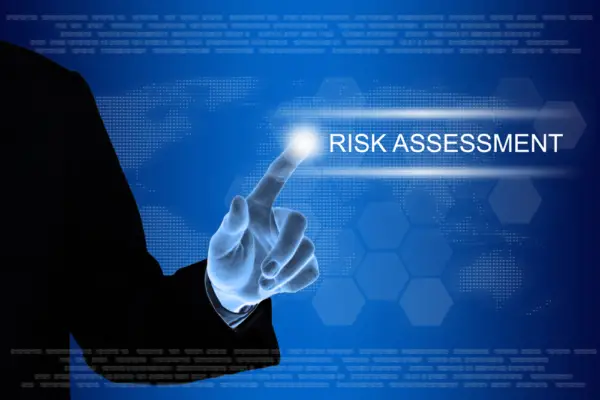Generator risk assessment plays a crucial role in ensuring the safe operation of generators in various industries and settings. Generators are widely used for providing electrical power when grid power is unavailable or unreliable. Despite their importance, generators can present various risks and hazards that must be identified and mitigated.
This article aims to provide a comprehensive overview of generator risk assessment, covering the different types and characteristics of generators and associated risks. By conducting a thorough risk assessment, organizations can identify potential hazards, evaluate their severity and likelihood, and implement appropriate control measures to minimize the risks.
Additionally, this article will explore the process of conducting a generator risk assessment, including identifying hazards, assessing risks, and developing risk mitigation strategies. Ultimately, this information will assist professionals in effectively managing the risks associated with generators and ensuring the safety of individuals and assets.

Background
Risk assessment plays a crucial role in identifying and evaluating potential hazards associated with generators, aiming to ensure the safety of individuals and the environment.
It involves a systematic and analytical approach to assess the likelihood and severity of risks, facilitating informed decision-making and the implementation of appropriate control measures.
Purpose of Risk Assessment
A risk assessment aims to systematically evaluate potential hazards and vulnerabilities to mitigate risks and make informed decisions.
Risk assessments are crucial in identifying and prioritizing maintenance actions, enabling organizations to allocate resources effectively and efficiently.
Key benefits of conducting risk assessments in the context of maintenance include reducing maintenance cost and effort by focusing on critical areas, optimizing maintenance schedules, and implementing proactive and preventative maintenance strategies.
Conducting routine hazard assessments and analyzing potential risks, organizations can identify areas where maintenance efforts should be concentrated to minimize the likelihood and impact of failures.
Ultimately, risk assessments provide organizations with valuable insights that enable them to prioritize maintenance tasks and develop an optimal maintenance schedule that maximizes system reliability and minimizes maintenance costs.
Generator Types & Characteristics
This will focus on the types and characteristics of generators. There are two main types of generators: traditional generators and alternative generators.
Traditional generators are typically powered by fossil fuels such as gasoline or diesel. They have been widely used for many years and are still popular due to their reliability and availability. Traditional generators can provide high power output, making them suitable for heavy-duty applications.
However, they also have some drawbacks. They require a constant supply of fuel, which can be expensive and may contribute to air pollution. Additionally, traditional generators tend to be noisy during operation.
On the other hand, alternative generators utilize renewable energy sources such as solar or wind power. These generators are becoming increasingly popular due to their environmentally friendly nature.
They harness energy from natural resources that are abundant and sustainable. Alternative generators do not produce harmful emissions, making them a cleaner option than traditional ones.
They are also generally quieter during operation. However, alternative generators may have limitations in terms of power output and availability, as they rely on the availability of sunlight or wind.
Both traditional and alternative generators have their own unique characteristics and advantages. Traditional generators are reliable and powerful, while alternative generators are environmentally friendly and sustainable. However, they may also share common impacts like noise pollution and emissions.
When choosing a generator, it is important to consider the type and characteristics that best suit your needs and preferences. Traditional generators offer high power output but come with fuel and pollution concerns. Alternative generators provide cleaner and more sustainable power but may have limitations regarding power output and availability.
Traditional Generators
Traditional generators, commonly used for backup power during emergencies, are known for their reliability and ability to generate electricity from fossil fuels.
When conducting a generator risk assessment, it is important to consider the maintenance requirements of traditional generators. Regular maintenance is crucial to ensure proper operation and prevent potential failures. Components such as fuel filters, oil filters, and spark plugs should be inspected and replaced as necessary.
Additionally, staff should be trained on the safe operation of the generator and be familiar with the generator’s manual. Regular inspections and testing should be conducted to assess the condition of the generator and identify any potential safety hazards.
After each assessment, a comprehensive report should be generated to document findings and recommend necessary actions to maintain the generator’s reliability and safety.
Alternative Generators
One alternative to traditional generators is renewable energy sources, which offer a sustainable and environmentally friendly option for generating electricity.
Renewable energy sources such as solar, wind, hydro, and geothermal power have gained significant attention due to their potential to mitigate climate change and reduce greenhouse gas emissions.
In terms of generator risk assessment, alternative generators present several advantages. Unlike traditional generators that rely on fossil fuels, renewable energy sources do not produce harmful emissions or pollutants during operation.
Additionally, the abundance and availability of renewable energy sources make them a reliable and constant power supply.
However, conducting a comprehensive risk assessment when implementing alternative generators is important to ensure efficient and safe operation.
Factors such as natural disasters, infrastructure requirements, and maintenance costs should be carefully considered to maximize the benefits of these alternative generators.
Common Impacts on Generators
Alternative generators are often used as backup power sources in various industries. However, assessing the risks associated with their operation is crucial to ensure their reliability and mitigate potential impacts. Generator risk assessment involves identifying and evaluating potential hazards and vulnerabilities that can affect the performance and safety of the generators.
Common impacts on generators include mechanical failures, fuel supply disruptions, environmental factors, and human errors. These impacts can lead to power outages, equipment damage, financial losses, and safety hazards. To provide a visual representation of these impacts, the following table illustrates the common impacts on generators:
| Common Impacts on Generators |
|---|
| Mechanical Failures |
| Fuel Supply Disruptions |
| Environmental Factors |
| Human Errors |
Thoroughly analyzing and addressing these impacts, organizations can enhance the reliability and resilience of their alternative generators, ensuring uninterrupted power supply during critical operations.
Identifying Risks Associated with Generators
Generators can significantly impact the environment due to their emissions, noise levels, and potential for fuel spills.
It is important to assess these risks and implement appropriate measures to mitigate any negative effects on the environment.
Environmental Factors
Environmental factors play a crucial role in the assessment of generator risk. When evaluating the risks associated with generators, it is important to consider the impact of environmental conditions on the performance and reliability of these machines.
- Impact of Environmental Factors on Generator Maintenance:
- Preventive maintenance strategies: Regular maintenance activities such as oil changes, filter replacements, and inspections are necessary to ensure the optimal performance of generators. Environmental factors such as temperature, humidity, and dust accumulation can affect the frequency and effectiveness of these maintenance tasks.
- Reliability-centered maintenance: This approach aims to identify and prioritize maintenance activities based on the criticality of equipment and the potential consequences of failure. Environmental factors are crucial in determining the optimal maintenance schedule for generators.
- Abnormal system conditions: Environmental factors can lead to abnormal system conditions such as voltage fluctuations, power surges, and excessive load demands. Condition monitoring techniques, such as vibration analysis and thermal imaging, are essential for promptly detecting and addressing these issues.
- Emergency power generation: Power generators are often relied upon during emergencies or power outages. Environmental factors such as extreme weather conditions can significantly impact the availability and performance of emergency power systems.
Considering these environmental factors and incorporating maintenance schedule optimization and condition monitoring techniques can help mitigate generator risks and ensure reliable operation in various conditions.

Conducting a generator risk assessment
Conducting a comprehensive generator risk assessment is crucial to mitigate potential hazards and ensure the safety of both individuals and the surrounding environment. A generator risk assessment involves evaluating the risks associated with operating a generator, identifying potential hazards, and implementing measures to control and minimize these risks.
It is important to conduct a thorough assessment that considers various factors, such as the location of the generator, the type of fuel used, and the specific operating conditions. This assessment should also consider any specific risks related to COVID-19 and include a COVID-specific risk assessment if necessary.
Professional expertise is often required to conduct a generator risk assessment effectively, requiring knowledge of relevant regulations and standards. Utilizing a risk assessment template or a wizard can help streamline the process and ensure a systematic approach to identifying and addressing potential hazards.
Personalized risk-benefit assessments should be conducted to determine the most appropriate control measures for each specific situation. By conducting a comprehensive generator risk assessment, organizations can proactively identify and mitigate potential hazards, ensuring the safety of individuals and the environment.
| Risk Assessment Component | Description | Purpose |
|---|---|---|
| Hazard Identification | Identify potential hazards associated with generator operation. | To understand the risks and potential harm. |
| Risk Analysis | Assess the likelihood and severity of identified hazards. | To prioritize risks and determine appropriate control measures. |
| Control Measures | Implement measures to control and minimize risks. | To eliminate or reduce the likelihood and severity of the identified hazards. |
| Monitoring and Review | Regularly monitor and review the effectiveness of control measures. | To ensure ongoing safety and compliance. |
| Documentation | Document the risk assessment process and findings. | To maintain a record of the assessment and demonstrate compliance. |
Frequently Asked Questions
How often should generator risk assessments be conducted?
Generator risk assessments should be conducted regularly to ensure generators’ safe and reliable operation. The frequency of these assessments may vary depending on factors such as the type of generator, its usage, and applicable regulations.
What are the common safety precautions to consider when operating a generator?
Common safety precautions to consider when operating a generator include ensuring proper ventilation to prevent carbon monoxide poisoning, using a grounded power cord to avoid electrical hazards, and following the manufacturer’s instructions for safe fuel storage and handling.
Are there any legal requirements or regulations to be followed when conducting a generator risk assessment?
Some legal requirements and regulations must be followed when conducting a generator risk assessment. These regulations may vary depending on the jurisdiction and may include guidelines on safety standards, hazard identification, and risk mitigation strategies.
What are the potential environmental risks associated with generator use?
Potential environmental risks associated with generator use include air pollution from emissions, noise pollution, and the release of hazardous materials such as fuel or coolant. These risks can negatively impact the surrounding area’s air quality, human health, and ecosystems.
How can generator risks be effectively mitigated or controlled?
Several measures can be implemented to mitigate or control generator risks, such as regular maintenance and inspections, proper ventilation and exhaust systems, proper grounding and wiring, fuel storage safety protocols, and adherence to all relevant safety regulations and guidelines.

Conclusion
Conducting a generator risk assessment is crucial to identify and mitigate potential generator risks. By understanding the different types and characteristics of generators, individuals can assess the risks that may arise from their use.
This thorough and analytical approach allows for a comprehensive evaluation of the potential hazards and the implementation of appropriate safety measures to reduce the likelihood of accidents or incidents.
A generator risk assessment is essential in ensuring the safe and efficient operation of generators.

Chris Ekai is a Risk Management expert with over 10 years of experience in the field. He has a Master’s(MSc) degree in Risk Management from University of Portsmouth and is a CPA and Finance professional. He currently works as a Content Manager at Risk Publishing, writing about Enterprise Risk Management, Business Continuity Management and Project Management.

